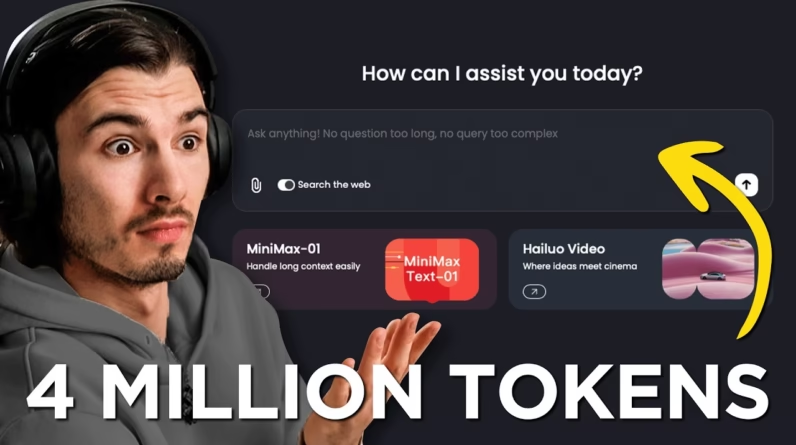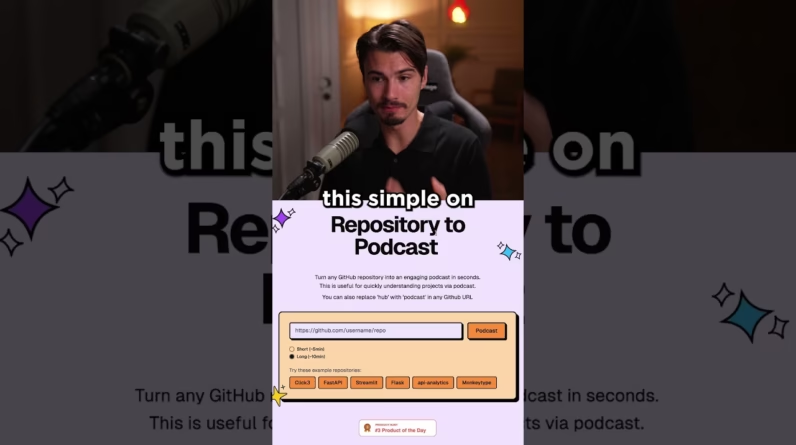
Exploring the world of no-code SaaS opens up exciting possibilities for you to create your own software solutions without the hassle of traditional coding. This article will outline five innovative ideas that can help you generate over $5,000 a month, using accessible tools and straightforward strategies. Each concept emphasizes the importance of niche markets and leveraging technology to streamline operations and enhance customer experiences.
From building a two-sided newsletter sponsorship platform to creating specialized job boards, these ideas illustrate various paths to success in the SaaS realm. You’ll learn about practical tools to implement these concepts, tips to get them off the ground quickly, and how to focus on areas that can lead to substantial revenue. Embracing these ideas might just be the perfect step toward launching your micro SaaS business today.
Table of Contents
5 No Code SaaS Ideas That Can Make $5,000+/Month

Concept Overview
Definition of No Code SaaS
In the world of technology, “No Code SaaS” refers to software solutions that allow individuals, regardless of their technical expertise, to build and manage applications without the need to write any code. This democratization of software development enables you to launch your own digital products, from simple websites to complex applications, utilizing drag-and-drop interfaces and visual programming. With no code platforms, you can focus on your ideas and creativity rather than getting bogged down in programming languages.
Importance of Micro SaaS Businesses
Micro SaaS businesses are small-scale, targeted software solutions catering to specific niches or markets. Their importance lies in the ability to address unique problems and needs that larger software solutions may overlook. By honing in on particular audience segments, you can create tailored products and services, building a strong relationship with your customers and achieving greater customer loyalty. This approach not only allows you to run a leaner business but also empowers you to generate consistent monthly revenue, often exceeding $5,000.
Potential Revenue Generation
The potential revenue generation for No Code SaaS ideas is substantial. With relatively low startup costs and a model that scales well, you can quickly reach profitability. Many entrepreneurs have turned their innovative concepts into successful platforms that generate substantial income; examples abound of individuals earning five figures monthly by catering to specific needs. By leveraging no-code tools, you can streamline production and reach your revenue goals faster.
Idea #1: Two-Sided Newsletter Sponsorship Platform
Inspiration from Swapstack
One exciting No Code SaaS idea is to create a two-sided newsletter sponsorship platform, inspired by the success of Swapstack. Swapstack connects newsletter publishers with sponsors looking to promote their services, thus creating a marketplace for both sides. This solution originated from Jake Singer’s experience while trying to monetize his own newsletter, leading to substantial revenue growth for his business.
Revenue Model and Initial Costs
The revenue model for this idea revolves around taking a commission for each sponsorship deal facilitated through your platform. By leveraging a robust database and implementing a transactional model, you can rapidly grow your earnings. The initial investment is remarkably low; with just about $100, you can launch a simple version of your platform and test the waters, which could lead to hundreds of thousands in revenue as demonstrated by Swapstack.
Recommended Tools for Development
To get started on this idea, you could use Airtable as your database to manage newsletters and sponsors, Slack for team communications, and Zapier for automating processes. Additionally, Bubble can be utilized to build a more complex front-end web application as your platform scales.
Idea #2: Specialized Job Board
Market Research on Industry-Specific Job Boards
Another lucrative idea is to develop an industry-specific job board. By focusing on a niche market—such as healthcare, tech, or education—you can differentiate yourself from larger platforms like LinkedIn or Indeed. Research shows that niche job boards attract a more engaged audience, leading to better job matches and higher satisfaction for both employers and job seekers.
Competitive Advantage Over Larger Platforms
One of the significant advantages of creating a specialized job board is your ability to cater directly to the needs of a particular industry. Companies often struggle to find qualified candidates amidst the flood of applications on larger platforms, making targeted job boards increasingly valuable. By establishing yourself as the go-to resource for specific job postings, you can establish a loyal user base and command higher posting fees.
Useful Tools for Job Board Creation
For building a specialized job board, you might consider using Softr and Airtable for managing job listings. Alternatively, Webflow can provide a sleek, visually appealing design for your site. These tools enable you to create a fully functional job board with ease, providing users a seamless application experience.
Idea #3: Habit Tracker
Popular Tracking Metrics
The next idea is to create a habit tracker application. Habit trackers have become increasingly popular for individuals looking to monitor a wide variety of personal metrics, including fitness goals, nutrition habits, sleep patterns, and productivity levels. By visualizing progress over time, users can stay motivated and committed to their goals.
User Engagement Strategies
To keep users engaged, consider implementing features such as reminders, rewards for consistency, or community elements to encourage sharing achievements with peers. By gamifying the tracking experience, you can foster a sense of accountability and commitment that keeps users coming back.
Tools Suitable for Building Habit Trackers
You can use Glide for a user-friendly, mobile-compatible web app experience, or combine Softr and Airtable to gather user input and display their progress visually. These tools will allow you to create an effective habit tracker without any coding skills.
Idea #4: Selling No Code Templates
Success Stories in Selling Templates
Selling No Code templates is yet another lucrative opportunity. Entrepreneurs like Jason Chin successfully created and sold Notion templates, showcasing how templates can fill specific needs. With successful templates fetching recurring monthly revenue, this market has substantial potential.
Revenue Potential from Template Sales
The revenue potential for template sales is significant. If you create a popular template that solves specific problems or saves time, you might earn $1,000 or more monthly, depending on your marketing strategy and target audience. Templates can cater to various fields, such as project management, content creation, or design.
Essential Tools for Template Development
For developing and selling templates, you can use Notion, Airtable, and Bubble. These tools will enable you to create aesthetically pleasing and highly functional templates that your audience will love.
Idea #5: Custom Dashboards for Businesses
Case Study of Pipeline Solutions
Custom dashboards for businesses present another No Code SaaS opportunity. Tessa Thomas developed Pipeline Solutions, focusing on gym analytics. Through custom dashboards, businesses can visualize their key performance indicators and make informed decisions based on data-driven insights.
Pricing Strategies for Custom Dashboards
You could begin by offering custom dashboards at prices ranging from $5,000 to $15,000, depending on the complexity and value provided. As a consultancy-based service, the potential for profitability is significant if you can build a solid reputation in your niche.
Recommended Tools for Dashboard Creation
For building custom dashboards, Softr and Airtable work effectively for preliminary development. If your project requires a more sophisticated solution, consider Flutter Flow or Bubble for advanced customizations.
Key Takeaways
Starting Small and Focusing on Niches
One of the main takeaways from these ideas is the importance of starting small and focusing on niches that are underserved in the market. By zeroing in on specific problems, you can create tailored solutions that resonate with your target audience.
Learning and Resources for No Code Development
As you embark on your No Code journey, leverage available resources to enhance your skills. The no-code community is thriving, and you’ll find countless learning materials and courses to guide you through the development process.
Future Opportunities in No Code and AI Integration
No Code combined with AI offers even more potential avenues for innovative solutions. As technology evolves and capabilities expand, those who harness this integration will be at the forefront of a transformative era in software development.
No Code Development Platforms
Introduction to No-Code Platforms
No-code platforms are revolutionizing how software is built. These tools empower you to create applications without the technical barrier of traditional coding. They cater to everyone from entrepreneurs to large organizations, facilitating rapid development and iteration.
Top Platforms Overview
Several leading no-code platforms are available today, each catering to different development needs and user capabilities. You might explore options such as Bubble, Webflow, Glide, Airtable, and Softr, each offering unique features and benefits.
How to Select the Right Platform for Your Needs
When selecting a no-code platform, consider your specific needs. Determine the complexity of the application you aim to build, your budget, and your learning curve. Different platforms have varying levels of ease and flexibility, so you’ll want a tool that aligns with your goals.
Top No Code Platforms of 2024
Comparison of Leading No-Code Tools
As of 2024, leading no-code tools such as Bubble, Webflow, Glide, Airtable, and Notion stand out for their versatility and user-friendliness. You can compare features, pricing, and user reviews to find the best tool that fits your project requirements.
Pros and Cons of Each Platform
Each no-code platform has its advantages and drawbacks. Bubble is great for complex apps but may have a steeper learning curve. On the other hand, Glide is user-friendly and perfect for mobile apps, while Airtable excels in database management. Understanding these nuances is vital to making an informed decision.
Target Users for Each Platform
Different platforms cater to various user levels and needs. Webflow attracts designers, Bubble appeals to entrepreneurs looking for custom web applications, and Glide focuses on users wanting mobile solutions. Identifying your primary user profile will help you select the platform that best suits your project.
Conclusion
Recap of Key Points
Exploring the world of No Code SaaS opens up an array of opportunities. From building specialized job boards and habit trackers to creating custom dashboards and selling templates, each idea offers a path to generating substantial income. No Code tools make it accessible for anyone to bring their ideas to life without needing technical skills.
Encouragement to Start No Code Projects
If you’ve been waiting for the right moment to jump into the No Code space, that moment is now! Don’t let the fear of technology hold you back. You have the knowledge and creativity to launch your own micro SaaS business.
Final Thoughts on Earning via No Code SaaS Ideas
The potential for earning through No Code SaaS is not just a dream but a reality shaped by innovative thinkers like you. So, roll up your sleeves, gather your ideas, and get started—your successful No Code SaaS business awaits!







